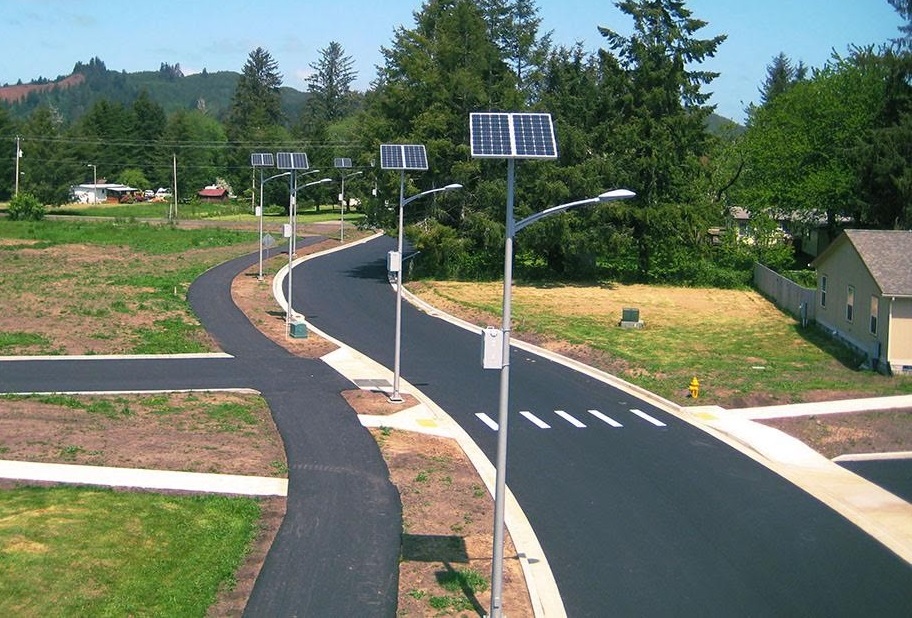Solar Lighting Basics: How Does Solar Lighting Work?Posted by Stephen Shickadance in The Basics. Solar FAQs.
How Does Solar Lighting Work?It's a common question among people looking to switch their outdoor lighting to solar. It might seem like a risk for many to go from the tried-and-true traditional lighting methods to something newer, but we're here to put those concerns to rest. Solar lighting works extremely well, even when there isn't much solar exposure. So how does solar lighting work? We're glad you asked. Find out how below: How Solar Lighting Works at DawnSolar lighting operates with a device called a controller, a crucial component of the energy management system. It connects directly to the monocrystalline solar panel where it detects fluctuations in voltage levels. The voltage from the solar panel rises as photons from sunlight strike the panel. When a certain voltage threshold is reached, the controller detects the change and instructs the LED light fixture to turn off. Once the light fixture has turned off, it's time to use the solar panel to charge the deep-cycle gel-acid battery, which provides power to the fixture during nighttime. How Solar Lighting Works at DuskAt night, the controller recognizes a significant drop in voltage from the solar panel. Then, electricity is altered from a chemical state (in the battery) to an atomic state, where it changes from DC power to AC. The driver ensures the proper voltages are channeled to the light fixture so there aren't fluctuations in power. A bad driver can sometimes cause the light fixture to blow out from excessive charge, or it may overcharge the battery. it's important your driver is in proper working order, or else the light fixture may see some significant damage. How Solar Panels WorkPanels are manufactured from silicon, a highly abundant element used in electronic equipment—you're reading this on a device that uses it. Silicon is gathered in a large vat, heated, and then spun into a large cylinder called an ingot, where silicon wafers are sliced from. Each of these thin wafers goes through what's called a doping process, where they are treated with chemicals that give them electrosensitive properties. Afterward, they are placed into an array and prepared for a bracket to be mounted into a full panel. We won't get into the technical jargon of how a panel works—there's enough science behind it to fill entire books—but for the intents of this blog, solar panels take photons from the sun's rays of light and knock loose an electron in the band gap of a solar panel. From there, the electrons travel through the wiring of the solar light into the battery, where they're stored as chemical DC power. When the sun rises, the power in the battery is used to power the LED fixture. How Do LED Fixtures Work?Much like the solar panels, there's a band gap for electrons to travel. When the electrons jump this gap, they emit a photon through a semiconductor called gallium nitrite. This emits blue light. The lens of the LED is coated with a layer of phosphorus, which alters the color of the light to white. The lens of the LED can be altered to produce different colors and color temperatures based on the requirements of the project and customer desires. LED fixtures (at least the good ones) have bulbs arranged in a parallel circuit, so all bulbs have their own connected path to electricity. If one LED bulb goes out, the rest continue to work. That's not the case with series circuits, where How Solar Lighting Works in a NutshellThat's a very brief overview of how solar lighting works. Of course, there are many more components and processes to a solar light, but this is just a small introduction so you understand that solar lighting works well with the proper components, even when there isn't a whole lot of light to shine on the panels. If you're interested to know more about the intricacies of how solar lighting works, contact us today. You can request a free quote for your project, or if you'd like to learn much more about solar check out our free solar lighting guide with much more information.
The Basics
Solar FAQs
|
ArchivesNo Archives Categories
Want More Info? |
LATEST NEWS & ARTICLES
